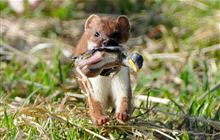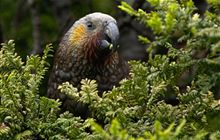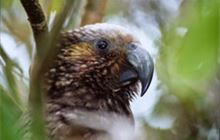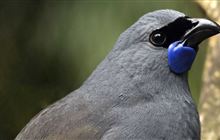How we use 1080
Introduction
The use of 1080 is strictly regulated and carefully planned so it is safe and we achieve the best results for native wildlife.1080 is strictly regulated
Government agencies and independent authorities oversee the use of 1080 in New Zealand to ensure it is safe and effective. There are regulations for health and safety, community consultation, animal welfare, bait manufacturing and other practices.
- The Environmental Protection Agency sets the rules and guidelines for the use of 1080. It audits aerial 1080 predator control operations, and produces annual and longer-term reviews on the use of 1080. Keeping safe around 1080 | EPA
- The Ministry of Health ensures that all operations follow strict health and safety measures. Guidelines for Issuing Permissions for the Use of Vertebrate Toxic Agents | Ministry of Health
- The Ministry of Primary Industries (MPI) sets conditions on the use of toxins to minimise the impacts on animal welfare. Animal welfare and pest management | MPI
- MPI sets the requirements for manufacturing, selling and best practice for using vertebrate toxic agents, including 1080. What is a vertebrate toxic agent? | MPI
- WorkSafe is responsible for the rules for handling, using and storing 1080 in New Zealand. New Zealand and 1080 | WorkSafe
We engage with hapū and iwi
We're required to consult with mana whenua for all 1080 aerial predator control operations.
We partner with hapū and iwi to respond to the threat of introduced predators in forests within their rohe/tribal boundaries.
We're also working on long term plans with hapū and iwi to restore the mauri/lifeforce of native ecosystems.
We consult with communities
When planning predator control operations, we (or our contractors) visit and consult with neighbouring landowners and affected communities to assess the potential effects.
We aim to:
- understand people’s views
- answer any questions they may have
- let them know how the operation could affect people, native flora and fauna, natural resources.
As part of this consultation process, we consider what we can do to mitigate any effects.
We also work with many community conservation groups.
We carefully plan and deliver operations
Operations involves helicopters distributing biodegradable 1080 bait pellets over large, remote and rugged areas where we can’t use traps.
In many places, 1080 operations are combined with ground control methods including trapping and bait stations. Each operation aims to reduce predators to near undetectable levels.
After we have permissions and consents, and have consulted with stakeholders, operations are scheduled for the best time to target predators. We run operations when monitoring shows predator numbers are dangerously high. This is the time when operations are needed to protect populations of threatened native species.
Fine, calm weather is required for operations. This allows predators to consume the pellets before rain dissolves the 1080.
Our technology enables us to place baits accurately to best target predators.
Find out more about How we run 1080 operations.
We monitor and report results
We monitor the numbers of rodents and/or possums, before and after an operation is completed.
Using scientific modelling, we can predict how predator populations will change in different areas throughout the year. We also forecast the timing and intensity of forest seeding events across the country. Learn more about the predator plague cycle.
We provide:
- operational reports to the Environmental Protection Authority (EPA)
- monitoring results to hapū and/or iwi and local stakeholders
- results in an annual report about DOC’s National Predator Control Programme.
Practices for predator control operations are continuously reviewed and improved. There is ongoing research into the use of 1080 and other methods for controlling predators.




